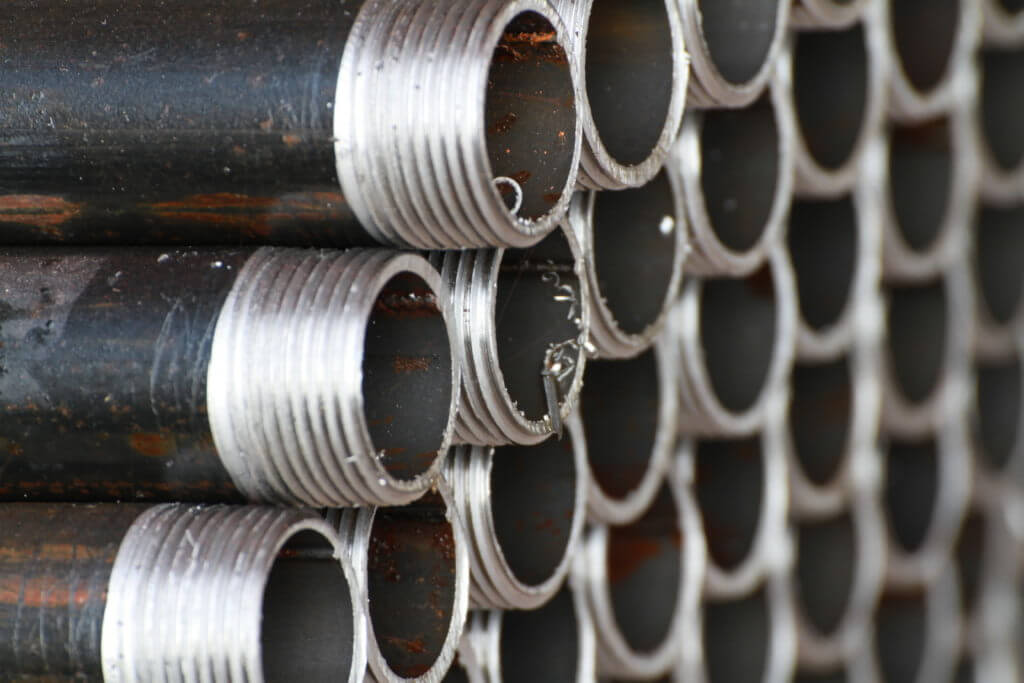Uszczelnianie rur i gwintów jest ważnym etapem w pracy instalatora. Każda instalacja powinna charakteryzować się doskonałą szczelnością. Uszczelnienie nie ma powodować szkód na skutek wycieku wody czy gazu. W zależności od stanu naszego portfela, materiału, z którego wykonane są rury czy typu instalacji możemy wyróżnić kilka sposobów uszczelnień o unikalnych właściwościach.
Uszczelnianie rur za pomocą pakuł
Uszczelnianie rur pakułami jest najbardziej tradycyjną metodą. Sprawdza się doskonale w przypadku instalacji wodociągowych i gazowych. Pakuły powstają w wyniku mechanicznego przetwarzania włókien lnu i konopi, kiedy to przędza zgrzebna jest materiałem docelowym, a pobocznym gorszej jakości włókna, tj. pakuły, które znalazły swoje zastosowanie w uszczelnianiu. Pakuły nasącza się szczelną minią ołowiową (która utlenia żelazo, lecz należy na nią uważać z powodu niekorzystnych właściwości) i pokostem, posiadającym działanie antykorozyjne.
Do operacji uszczelniania potrzebne są pakuły (z konopii): Pakuły Konopie 100g czy szpuli z dozownikiem: Pakuły Konopie szpula 80g w dozowniku) i specjalna pasta uszczelniająca (np. Pasta uszczelniająca AGAM 500g, Pasta uszczelniająca LENPAK 500g woda/gaz). By uszczelnienie było sprawniejsze, należy przygotować gwint zewnętrzny łączonej rury za pomocą brzeszczotu. Końcówkę oskrobuje się aż do osiągnięcia chropowatości, wpływającej na komfort i stabilność pakuł. Na powierzchnię rury nawija się włókno pakuły, które następnie jest smarowane pastą uszczelniającą. Jeśli wykonamy czynności w odwrotnej kolejności, pakuły będą się ślizgać po gwincie. Aby zachować pełną szczelność i zapobiec gniciu pakuł, na koniec operacji pokrywamy je jeszcze raz pastą.
Jeśli nie posiadamy doświadczenia w uszczelnianiu pakułami, wadą może być nieestetyczny wygląd uszczelnienia z powodu wystających końcówek włókien.
Uszczelnianie rur za pomocą taśmy teflonowej
Teflon jest popularnym środkiem PTFE, doskonale szczelnym. Uszczelnianie gwintów taśmą teflonową (np. Taśma teflonowa gaz 12 mm (12mb) rolka, Taśma teflonowa 12 mm (10 mb) rolka) jest bardzo podobne do tego za pomocą pakuł. Na czyste i odtłuszczone gwinty zewnętrzne nawija się i nakłada taśmę o wymaganej grubości. Ważne, by poszczególne zwoje nie były widoczne. Nakładanie taśmy należy wykonywać z należytą dokładnością i starannością. Każde cofnięcie podczas zakręcania prowadzi do zerwania taśmy i – co za tym idzie – nieszczelności.
Uszczelnianie rur za pomocą nici
Nić uszczelniająca (np. Nić uszczelniająca teflonowa do gwintów LOCTITE 150 m, Nić uszczelniająca do gwintów LOCKER 150 m) przydaje się tam, gdzie mamy problem z cieknącym przewodem, np. podczas mocowania nowej baterii przy zlewie, wannie. Jest niewielka i niepozorna, a także prosta w nakładaniu.
Nici, których używamy do uszczelniania rur są z:
- teflonu (PTFE) – bardziej wytrzymałe na zmiany temperatury, lecz posiadają te same wady co w przypadku taśmy teflonowej,
- poliamidu (PA) – rzadziej ulegającemu zerwaniu.
W każdym wypadku na czysty i odtłuszczony gwint nawija się daną nić. Następnie skręcamy ją mocno z pozostałym przewodem czy fragmentem rury. Dobrze wykonane uszczelnienie zachowuje szczelność, gdy cofniemy je o maksymalnie 1/9 obrotu.
Uszczelnianie za pomocą żywicy beztlenowej
Żywica beztlenowa (anaerobowa) jest mało popularnym sposobem uszczelniania. Być może z tego względu, iż stosuje się ją jedynie w przypadku gwintów metalowych i jest materiałem wymagającym. Nie sprawdzi się w przypadku rur o średnicy większej niż 2”, gdyż może mieć problemy z utwardzeniem. Polimeryzuje się w temperaturze powyżej 10 stopni Celsjusza.
Żywica anaerobowa (np. Pasta anaerobowa 50ml tubka) jest nanoszona na odtłuszczony, czysty gwint za pomocą aplikatora, choć zwykle zaleca się, by dwa pierwsze rowki pozostawić wolne. Czas polimeryzacji – w zależności m.in. od materiału, rozmiaru powierzchni – może zająć kilkanaście minut, a nawet kilkadziesiąt godzin. Uszczelnianie żywicą beztlenową umożliwia dowolne manewrowanie połączeniem przed związaniem. O pastach uszczelniających przeczytasz w osobnym artykule.
Odpowiednie uszczelnienie jest niezwykle ważne w przypadku instalacji domowych. Uszczelki utrzymują stałe ciśnienie wody i gazu, jednocześnie skutecznie je izolując. Warto rozejrzeć się wśród różnych sposobów uszczelniania i określić swoje potrzeby. Oszacuj swoje możliwości finansowe i czas, który możesz przeznaczyć na operację uszczelniania.
